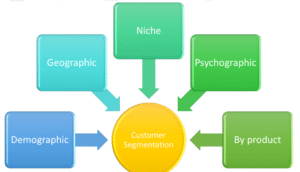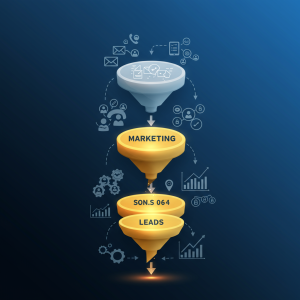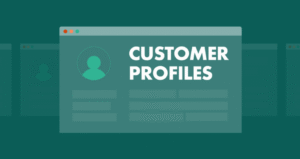Generative AI in Outbound Marketing: How to Craft Personalized Campaigns at Scale

Generative AI in Outbound Marketing: How to Craft Personalized Campaigns at Scale
Outbound marketing has evolved from mass mailers and cold calls to highly targeted, data-driven engagement. Yet many teams still struggle to personalize outreach without burning through time and resources. Enter generative AI—a game-changer that enables marketers to produce hyper-personalized campaigns at scale. In this post, we’ll explore what generative AI is, why it matters for outbound marketing, and how you can implement it effectively to boost response rates and drive revenue.
What Is Generative AI and Why It Matters
Generative AI refers to machine learning models that can produce human-like text, images, or even audio based on training data. In marketing, tools like GPT, T5, or BERT variations can generate persuasive copy, craft email subject lines, or draft social media posts tailored to individual prospect profiles. By leveraging historical campaign data and buyer personas, these models learn tone, style, and vocabulary that resonates with each segment.
Benefits of Integrating Generative AI into Outbound Campaigns
- Scalability: Produce hundreds or thousands of unique email variations in minutes.
- Consistency: Maintain brand voice across multiple channels without manual oversight.
- Speed: Launch new outreach sequences rapidly, responding to market changes in real-time.
- Enhanced Personalization: Leverage dynamic data points—company size, industry, recent news—to tailor messages to each prospect.
- A/B Testing at Scale: Generate dozens of subject line permutations and copy variants to optimize performance.
Key Use Cases for Generative AI in Outbound Marketing
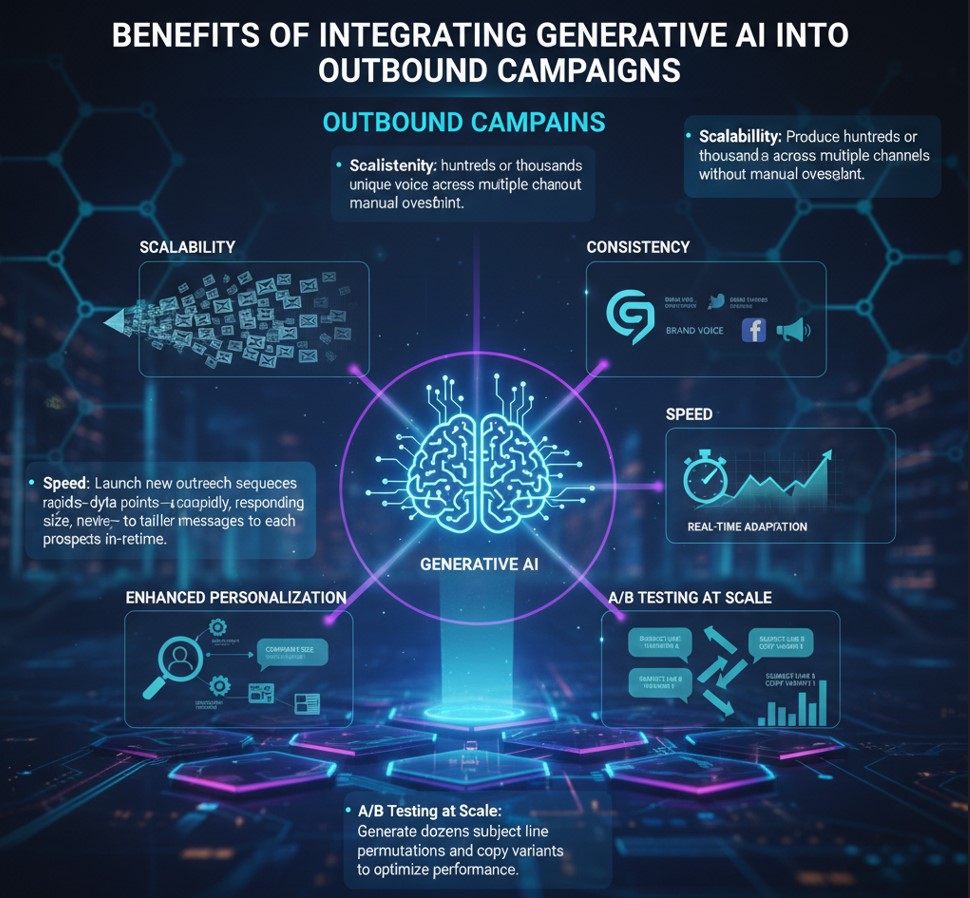
Let’s examine practical applications where generative AI can supercharge your outreach efforts.
1. Cold Email Personalization
AI tools can ingest firmographic and technographic data to craft bespoke opening lines. Instead of a generic “Hope you’re well,” your email can reference a recent product launch, a mutual connection, or an industry trend that matters to that prospect’s role.
2. Dynamic Subject Line Generation
Subject lines determine whether your email gets opened. With generative AI you can automatically test dozens of headline formulas—questions, statistics, or insight teasers—tailored to each segment’s pain points.
3. Personalized LinkedIn Outreach
AI can parse a target’s LinkedIn profile—roles, posts, shared articles—and generate a concise connection request or InMail that highlights genuine interest and shared value, increasing acceptance rates dramatically.
4. AI-Generated Call Scripts
Sales reps often rely on static scripts that feel robotic. Generative AI can produce adaptive call scripts, offering contextual talking points based on real-time data, past interactions, or CRM notes.
5. Personalized Landing Page Content
Pair outbound ads or email links with AI-driven landing pages that adjust headlines, benefits, or testimonials to align with the visitor’s industry or job title, boosting conversion rates.
Step-By-Step: Implementing Generative AI in Your Outbound Workflow
Ready to get started? Follow these practical steps to integrate generative AI into your outbound marketing process.
Step 1: Define Your Objectives and KPIs
Are you aiming to increase email open rates, boost response rates, or accelerate deal velocity? Clarify objectives, then assign KPIs like open rate lift, reply rate, or demos booked attributed to AI-powered content.
Step 2: Gather and Clean Data
High-quality training input is critical. Compile customer personas, past campaign performance metrics, CRM notes, and public data sources. Remove duplicates, standardize formats, and enrich missing fields where possible.
Step 3: Choose Your Generative AI Platform
Evaluate options like OpenAI’s GPT series, Anthropic Claude, or specialized marketing AI platforms (e.g., Jasper AI, Copy.ai). Consider API flexibility, data privacy, and integration capabilities with your CRM or marketing automation stack.
Step 4: Create Prompt Templates
Design reusable prompt frameworks. For example: “Write a 120-word cold email to a CFO at a mid-market SaaS company, referencing their annual revenue growth and offering a solution to optimize spend management.” By parameterizing industry, role, challenge, and desired action, you can generate personalized outputs programmatically.
Step 5: Test, Iterate, and Optimize
Run small-batch A/B tests comparing AI-generated copy against your top-performing templates. Measure open, reply, and conversion rates. Refine prompts or add new input variables based on performance insights.
Step 6: Scale Gradually and Monitor Quality
As you expand usage, implement guardrails like toxicity filters or approval workflows to ensure content remains on-brand and compliant. Monitor AI output for hallucinations or factual errors in real-time.
Best Practices and Ethical Considerations
Generative AI is powerful but demands responsible usage to maintain trust and compliance.
- Transparency: Disclose AI-assisted content when appropriate, especially in regulated industries.
- Data Privacy: Adhere to GDPR, CCPA, and other local regulations when using personal data for personalization.
- Human Review: Always have a human curation step to catch errors or tone issues before outreach.
- Bias Mitigation: Audit training data and prompts to avoid reinforcing stereotypes or discriminatory language.
- Opt-Out Respect: Honor unsubscribe requests or do-not-contact lists without exception.
Measuring Success: KPIs and Metrics
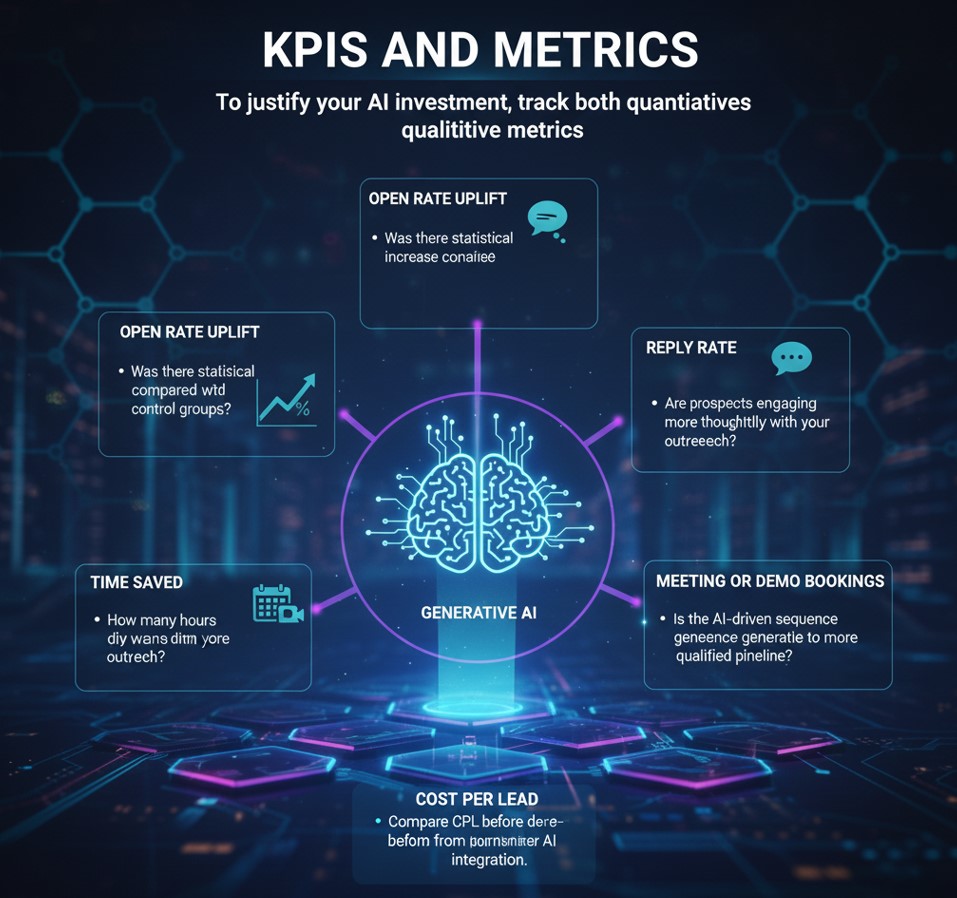
To justify your AI investment, track both quantitative and qualitative metrics.
- Open Rate Uplift: Was there a statistical increase compared to control groups?
- Reply Rate: Are prospects engaging more thoughtfully with your outreach?
- Meeting or Demo Bookings: Is the AI-driven sequence generating a more qualified pipeline?
- Time Saved: How many hours did your team reclaim from manual copywriting?
- Cost per Lead: Compare CPL before and after AI integration.
Real-World Example: Scaling a B2B SaaS Campaign
Imagine a mid-market SaaS provider targeting finance executives. By feeding revenue tiers, product use cases, and customer success stories into a GPT-based model, the team generated 500 unique outreach emails in under an hour. Post-launch, they achieved a 28% open rate (vs. 17% previously) and a 9% demo booking rate (vs. 4%). The AI also drafted personalized LinkedIn InMails, lifting connection acceptance by 35%.
Top Tools and Platforms
Consider these solutions to power your AI-driven outbound marketing:
- OpenAI GPT API – Highly flexible, wide language capabilities
- Anthropic Claude – Focus on safety and contextual understanding
- Jasper AI – Marketing-focused templates and collaboration features
- Copy.ai – Rapid ideation and multi-channel content generation
- Salesforce Einstein – Native integration with Salesforce CRM
Future Trends in AI-Powered Outbound Marketing
As models become more advanced and accessible, expect to see:
- Multimodal Outreach: AI that seamlessly crafts copy, images, and video snippets for omnichannel campaigns.
- Real-Time Personalization: Dynamic content that adjusts during the prospect’s browser session or email open.
- Predictive Lead Qualification: Models that score and route leads automatically based on conversational cues and firmographics.
- Ethical AI Frameworks: Industry standards for bias auditing and data governance in marketing AI.
Conclusion
Generative AI is not a fleeting trend—it’s a transformative force that empowers outbound marketers to deliver personalized, scalable, and high-impact campaigns. By defining clear objectives, curating data, selecting the right tools, and adhering to ethical guidelines, your team can unlock substantial gains in engagement and pipeline velocity. Embrace AI today to stay ahead of the curve and turn each outreach into a meaningful conversation that drives business growth.
Ready to elevate your outbound marketing with generative AI? Start by experimenting with a small pilot campaign, measure your KPIs, and scale success across your entire funnel. The future of outbound is AI-powered—and the time to act is now.
Learn more about: B2B vs. B2C Outbound Marketing: What’s the Difference?

